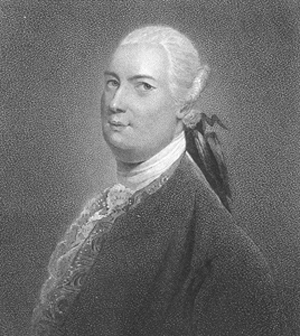Travels to Discover the Source of the Nile, in the Years 1768, 1769, 1770, 1771, 1772, and 1773. 5 vols. Edinburgh: G.G.J. and J. Robinson, 1790.

It is easier to guess than to describe the situation of my mind at that moment—standing in that spot which had baffled the genius, industry, and inquiry of both ancients and moderns, for the course of near three thousand years.
—Bruce, at the Springs of Geesh (Vol. 3, p. 597)
Bruce has been described as the poet, and his work the epic, of African travel—probably because he recounted his exploits more from memory than from journals over a dozen years after they had taken place. Born in Scotland and educated at Harrow and Edinburgh University, Bruce inherited his father’s estate at the age of twenty-seven and traveled around the Mediterranean visiting Roman ruins. In 1763, he was appointed British consul at Algiers, where he continued his study of classical ruins and the Arabic language. In 1768, with Italian artist and friend Luigi Balugani, he resolved to mount an expedition to search for the source of the Nile River. They were the first Europeans to focus exclusively on that goal.
Balugani and Bruce arrived in Alexandria, Egypt, in June 1768. Drawing upon earlier medical training, Bruce passed himself off as a doctor and obtained diplomatic letters that aided his subsequent travels in Arabia and Ethiopia. The men ascended the Nile to Aswan; thwarted by hostile tribes, they then headed east across the desert to the Red Sea, to Jidda on the Arabian peninsula, then southward, crossing back to the Eritrean port of Massawa, which they reached in September 1769. They arrived in the Ethiopian capital city of Gondar in February 1770. Bruce won favor from the local rulers by instituting sanitary measures that stemmed an outbreak of smallpox. Exploring the region around Lake Tana, he came upon the Springs of Geesh [see SCATURRO] on 14 November 1770, which he mistakenly took as the source of the Nile. What he named the Fountains of the Nile were in fact the sources of the Blue Nile and had already been seen and identified by Portuguese Jesuits almost 150 years earlier [see LOBO]. Bruce’s artist assistant died in 1771, and Bruce left Gondar later that year, sailing down to present-day Khartoum, making an arduous trek across 400 miles of the Nubian Desert to reach Aswan, and then traveling down the Nile to Cairo. He arrived in England in June 1774.
Although Bruce had a private interview with King George III and was elected a fellow of the Royal Society, his African tales, told with a “grand air” and from a “gigantic height” (Bruce was 6'4"), were generally met with skepticism among London’s learned. He left the vindication of his name to posterity and retired to his estate. Today, he is credited with rekindling European interest in uncharted Africa, particularly the upper reaches of the Nile, and stimulating geographic inquiry in Britain, which lead to the founding of the African Association [see AFRICAN ASSOCIATION].